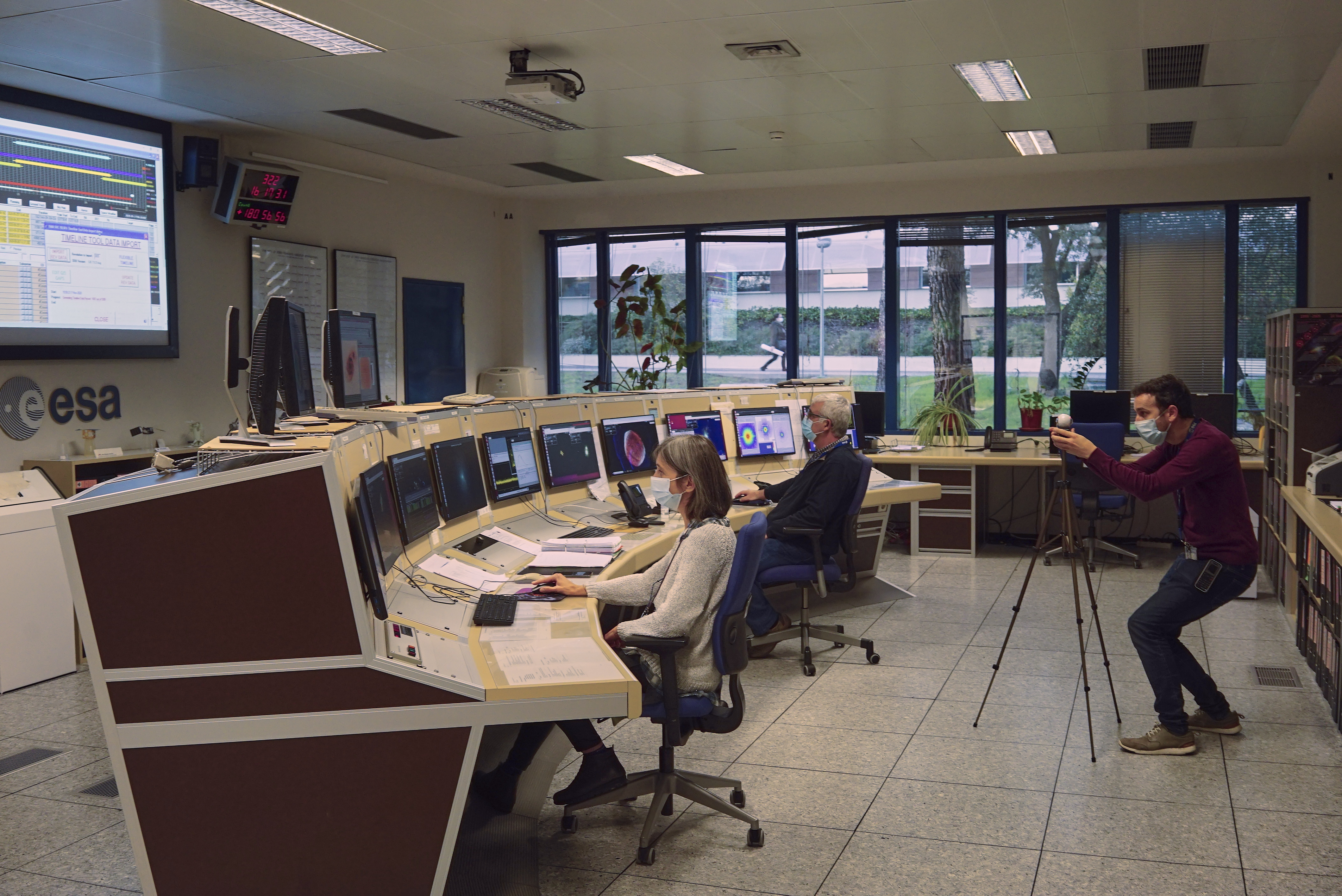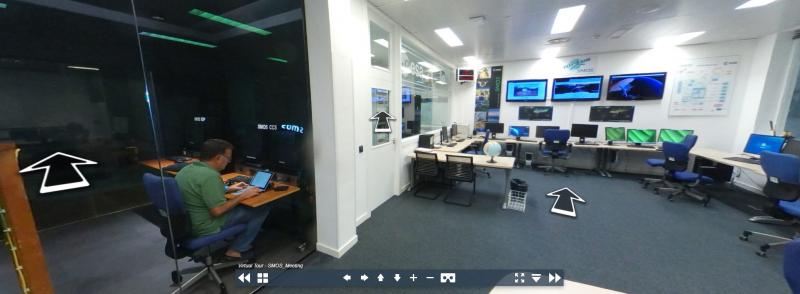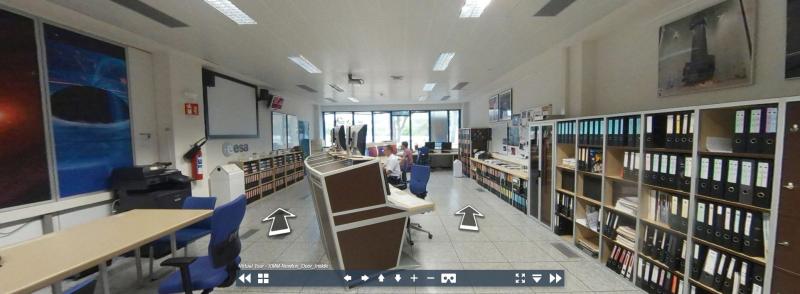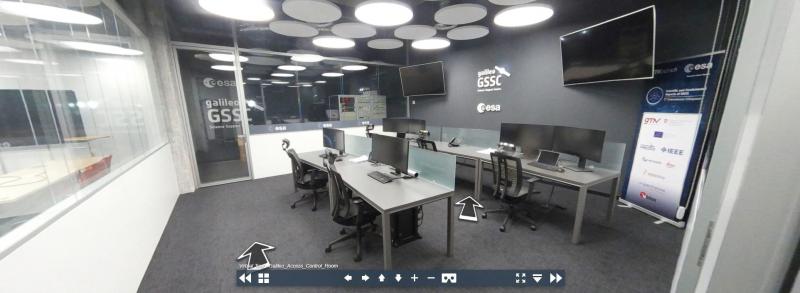One of the consequences of the 2020 pandemic is that face-to-face visits to the European Space Astronomy Center, where our headquarters are located, are no longer allowed, which affects both the Space Science Experiences and Educational Excursions, both part of the educational activities we carry out, and which are canceled until further notice.

Taking 360º photos in the XMM-Newton control room Credit: ESA / CESAR
In this last month, from the CESAR team we have been working on a virtual tour with inmersive 360º pictures, allowing to access to our facilities remotely.
Along with the creation of a Virtual Educational Platform (CVEP), which at the time of writing these lines is in the testing phase, we think it will cover up the lack of presentiality in our activities, as well as setting up an opportunity to make our educative offer worldwide.
In the virtual tour, we will be able to see:
European Space Astronomy Center
Founded in 1978 as an ESA satellite tracking station - VILSPA (acronym for Villafranca Spain) - in 2004 it became the European Space Astronomy Center, the site where all the scientific data generated by space telescopes and Earth observing satellites of the European Space Agency are stored for its study.
ESAC is also the headquarters of the Scientific Operations Center (SOC) of missions such as, XMM-Newton, Mars Express, Gaia, or BepiColombo.
Enter ESAC virtual tour

Entrance of the European Space Astronomy Center (villafranca del Castillo) Credit: ESA / CESAR
CESAR Observatories, control and lectures Room
Located on the south hill of the ESAC complex, right next to the CAB-INTA (Center for Astrobiology), CESAR has two MEADE LX200 telescopes for night optical observation, as well as two solar telescopes (H-Alpha and visible). Each telescope is placed in a dome that protects them from rain and other wheather variations.
In CESAR lectures room we carry out our educative activities, such as the Space Science Experiences for schools, or the training courses for teacher
Enter CESAR Virtual Tour

CESAR observatories, in the background, the HELIOS solar telescope dome Credit: ESA / CESAR
Earth observation satellite SMOS control room
Right next to our offices is the control room of the SMOS (Soil Moisture & Ocean Salinity) satellite, launched in 2009 allowing the monitorization of soil moisture and variations in ocean salinity , controlling the water cycle on Earth, a vital element for the human being.
Enter SMOS Virtual Tour

SMOS Control room. Credit: ESA / CESAR
XMM-Newton space observatory control room
Launched in 1999 and with more than 20 years of service to science, the X-ray Multi-mirror Mission-Newton is a space telescope that observes the extremely hot universe (millions of degrees), emmiting in the x-ray wavelenght. Its field of study focuses in compact objects like black holes and their accretion disks, active galaxies (AGN) and stellar remnants, among other things.
Enter XMM-Newton Virtual Tour

XMM-Newton control room Credit: ESA / CESAR
GNSS scientific operational room
Galileo is the European Union's Global Satellite Navigation System (GNSS). Like the other global systems, Galileo provides radio signals for position, navigation and timing purposes.
Enter GNSS Virtual Tour

GNSS scientific operational room. Credit: ESA/CESAR